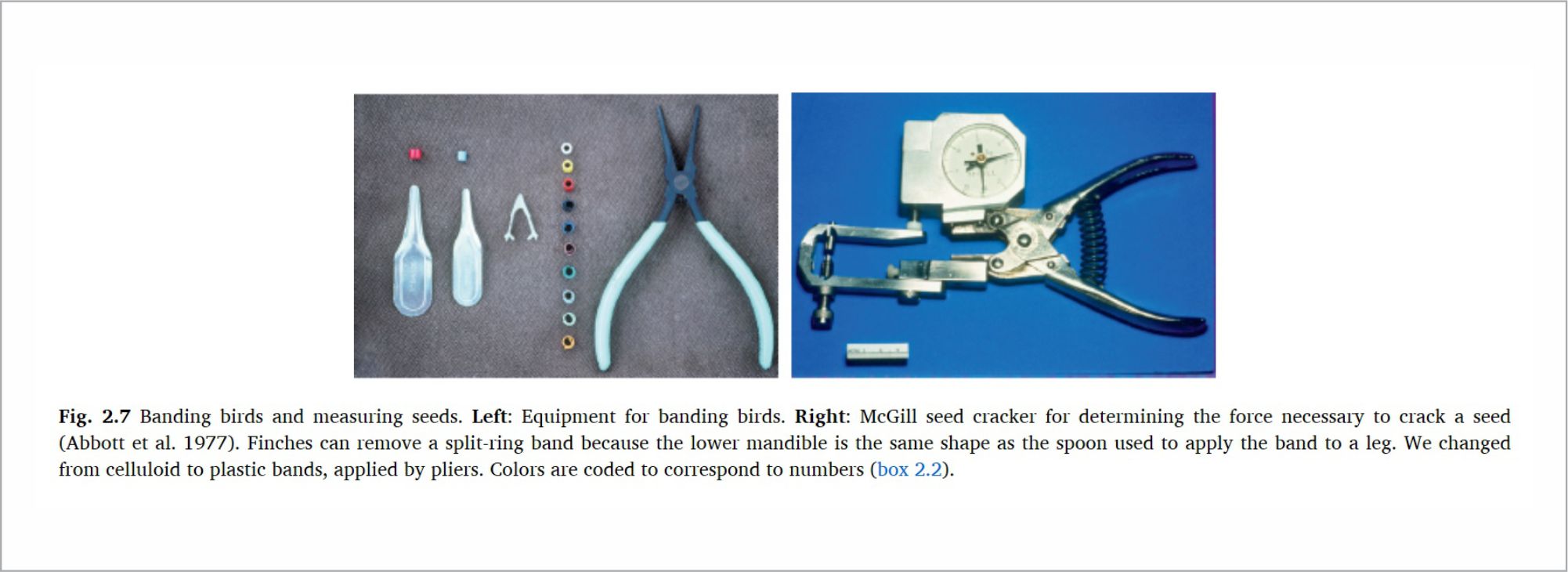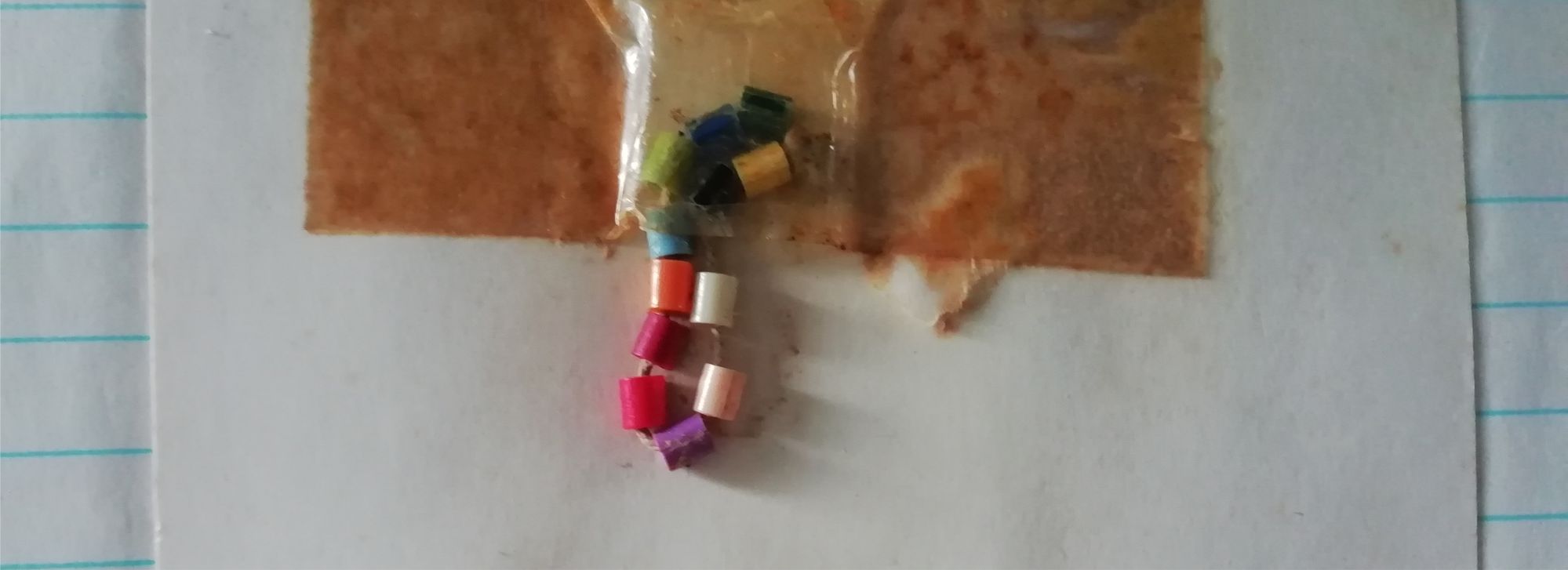Highlight
The Grants' bands for ringing finches
All collections of artifacts and documents housed by libraries, archives and museums have items that stand out for some reason: for the quality of their material, for the meaning of their content, for their historical value... In the Charles Darwin Foundation (CDF) collections, one of such items are the Grants' bands for ringing finches.
Within the scientific community, Peter and Rosemary Grant are internationally known because of their work with endemic finches in the Galapagos Islands. Both British evolutionary biologists, they worked in the small Daphne Major islet since 1973, capturing, tagging, and sampling the local finches. Through those patient, long-term studies, they finally achieved their main goal: showing that natural selection, contrary to what Charles Darwin originally thought, can be seen within a single lifetime. They also "elucidated the mechanisms by which new species arise and how genetic diversity is maintained in natural populations".
The Grants' work is collected and described in a myriad of books, academic papers, conferences, and interviews. There are, however, humbler documents linked to that research. Materials with a story behind, which also make part of the long-term process of inquiry and discovery. It is the case of the Grants’ ringing bands.
The bands were found in the CDF Archive by chance. They were discovered taped inside an old, seriously damaged field diary which included notes on birds without any relation to the Grants' work. No additional information was added to the basic label adhered to the paper alongside the bands. Luckily enough, the Grants themselves were kind enough to provide the proper background to the finding.
"These look like celluloid bands made by a company in England for bird-ringers (banders). The name of the company is A. C. Hughes and Company. We used those in our first field season in early 1973.
Subsequently, we discovered that finches were able to remove the bands from their legs fairly easily. They also became brittle in the strong sunlight. Therefore, we switched to bands made of PVC (polyvinyl chloride) plastic. At first we were able to purchase bands made by a technician (J. Anderson) at the University of Durham in England. Unfortunately, after just a couple of years he decided to stop making them because it was painful for his thumbs, but before he did so we purchased from him a large supply of plastic in 10 colors.

We then made the bands individually by ourselves because we could not find an alternative supplier. It was tedious work but we became quite fast at it. The procedure was as follows. Each of the PVC sheets measured approximately 30 x 20 centimeters. We cut strips approximately 2 mm wide, and then cut them in lengths of about 2 cm. To make the bands we used forceps to grasp a single piece at one end, plunged it into boiling water for a few seconds to make it soft and pliable, removed it from the water, wrapped it around the tips of the forceps and thrust it into a specially made aluminum tube and withdrew the forceps. The inner dimensions of the tube matched the outer dimensions of the band. In the last step we put the tube into boiling water so that the coiled plastic could expand and fit snugly against the metal. After putting the tube into cold water to harden the plastic we used a metal rod as a plunger to push the band out of the tube. The result was a band with a small amount of overlap of the two ends. They are illustrated in Fig. 2.7 in our book 40 Years of Evolution. Darwin’s Finches on Daphne Major Island (P. R. Grant and B. R. Grant, 2014, Princeton University Press)".
Small fragments of scientific work like these bands are a vital, and too often underappreciated, part of the history of science. And oral tradition (and personal communication) is a valuable channel to recover basic information about non-recorded events. The combination of all these elements can bring to life an important piece of the huge mosaic of scientific endeavor.
Grant, Peter; Grant, Rosemary. [Ringing bands for finches]. [Object]. [N.d.] : A. C. Hughes and Company, 1973. [N.d.] : [n.d.] : [n.d.]. DDC 508. Well preserved.
Subject categories: Ecology | Evolution | Genetics | History of science | Natural history | Ornithology
Keywords: Artifacts | Birds | Objects
Time framework: 1973
Text & picture: Edgardo Civallero (edgardo.civallero@fcdarwin.org.ec).
Publication date: 1 May 2022
Last update: 1 May 2022
